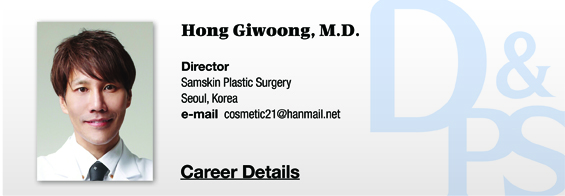
Sometimes we tend to focus only on the physical features of a face, however, attractiveness has a lot to do with facial expressions and emotions. Patients with Moebius syndrome are unable to make facial expressions and have been reported not to evoke favorable emotions in others. Guillaume Decente, French psychologist, said only a true smile, where both the eyes and mouth are smiling, has a positive impact on our emotions and the so-called Pan Am smile, where only the mouth corners are lifted, can be recognized as false and pretentious.
Charles Darwin, in his book The expression of the emotions of man and animals explained that humans are genetically programmed to feel the same emotions as shown by facial expressions of others. On the other hand, a psychologist, Paul Ekman saw that how we understand facial expressions is not universal and can vary across cultures. A study examined the expressions and reactions of six major human emotions – joy, sorrow, anger, worry, disgust, and surprise in the aborigines of Papua New Guinea, who were isolated from the impact of the Western culture. It was found that the inhabitants of Papua New Guinea have similar reactions to those of humans living in civilization. These results were contrary to Ekman’s views and supported that human reactions to common emotions and expressions are universal and absolute and do not vary depending on the culture.
Therefore, when a minimally invasive procedure overcorrects and results in unnatural facial expressions, the patient may be dissatisfied with the change and feel uncomfortable about his or her own facial expressions, regardless of how much the original sagging or wrinkles have improved. Current trends also favor procedures that result in natural change of the face.
[Advertisement] FCR® (Fractional Prickle CoralCalcium Regentron) – Manufacturer: (www.illglobal.com)]
Turning to the relative standards of attractiveness, we tend to feel drawn to others who resemble those close to us (family, regional similarities, race, and friends, etc.). It is true, that sometimes we are also attracted to people that look very different from us, although this is much less frequent. Generally speaking, people tend to share similar standards of beauty within the same culture. As for the difference, women are attracted to manly men, and men are attracted to feminine women. Men feel strong attraction to youthful appearance of women. Women who are deemed attractive these days tend to have a face that resembles that of a 6-7 year old. Lastly, value systems change across time periods and societies. People generally have a strong desire to resemble the looks of the ruling class due to the innate desire to improve their social status. In one example, many Asian women used to receive surgical procedures to enlarge their eyes and heighten their nose bridge to look Caucasians more, as the Western culture was deemed superior. However, the recent trends favor preserving the Asian appearance.
From reviewing both absolute and relative standards of attractiveness, we come to the following four common conditions; characteristics/appearance of youthfulness, good symmetry, balanced face with average features and characteristics fitting one’s gender and age. Rather than the golden ratio, measurements that fall within the anthropometrics of an attractive face may be more suitable as objective references for a beautiful face.

<Figure 1> Composite images of attractive faces in different races(Courtesy of Rhee Seungchul of Dongguk University Medical School.
Let us take a closer look at skin conditions and wrinkles, which are important characteristics that affect the above four factors of attractiveness. General skin conditions such as the skin tone, complexion, pore size, blemishes and moles, etc. can affect our aesthetic assessment of a face. According to a study on how we perceive someone’s age from their face, we tend to focus on the part that looks most aged. That is, we tend to ignore the parts that appear youthful because we focus on the most aged appearance. For example, someone with a baby face and a bald spot could be seen as older than his or her age, despite the youthful face. Some studies reported that deep facial wrinkles scatter our visual focus and create a negative impression. This is why it is necessary to treat wrinkles and sagging of the face as they can outshine the youthful aspects of our face. It is important to have an overall approach rather than focus on certain areas for optimal results.
In 2011, Dr. Rhee Seungchul of Dongguk University Medical School created composite images of attractive female faces in different races. These composite faces have in common the aforementioned conditions of attractiveness regardless of the race. However, racial differences do exist and aesthetic procedures should pursue standards for each race rather than blindly follow Caucasian standards(Figure 1).
According to Dr. Cho Yongjin , a facial physiognomy specialist, what Koreans consider a beautiful female face has changed over time due to cultural learning and adjustment. This is due to the value systems of a society and culture change over time and affect how we see physical beauty.
-To be continued




















